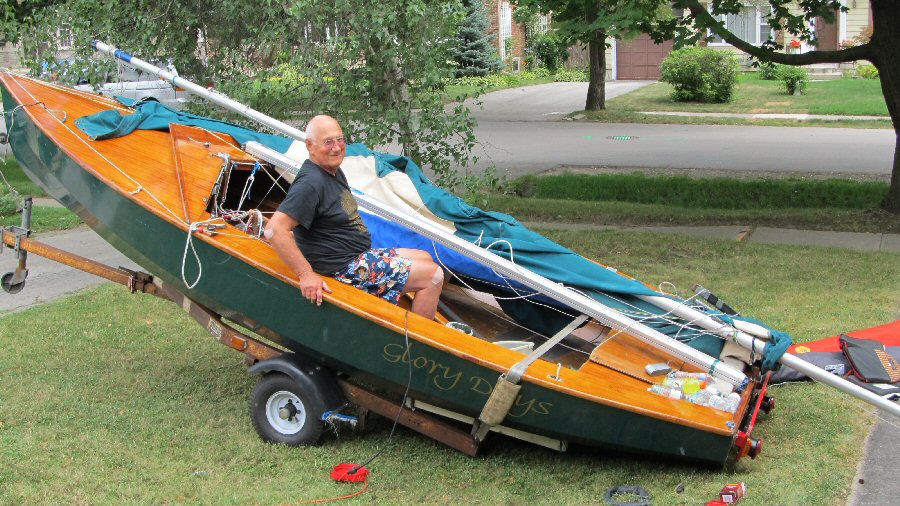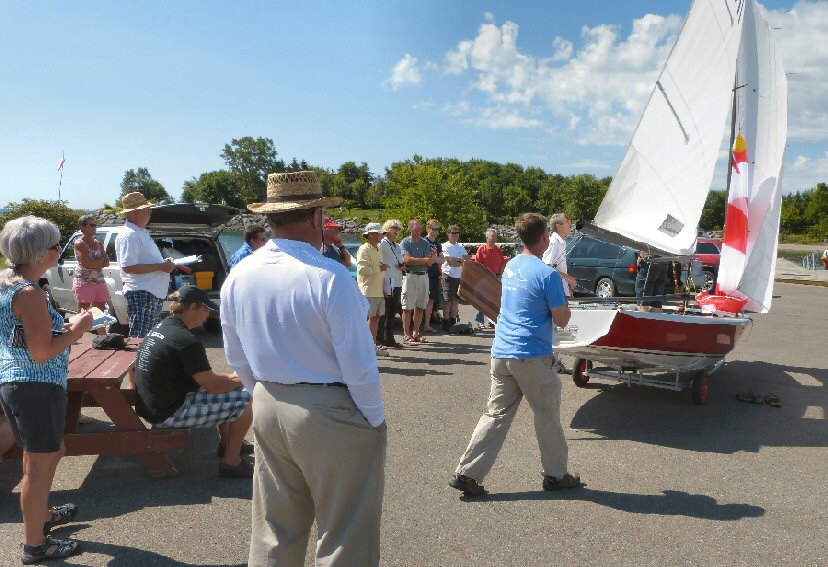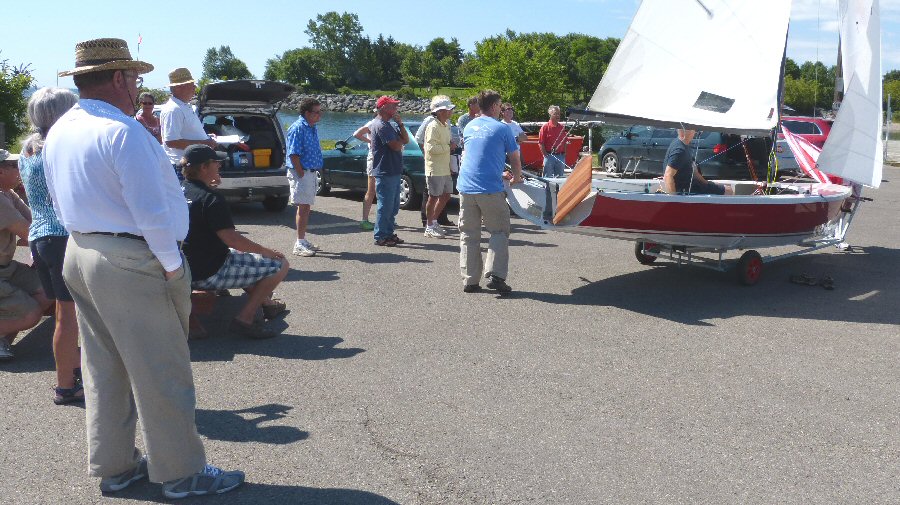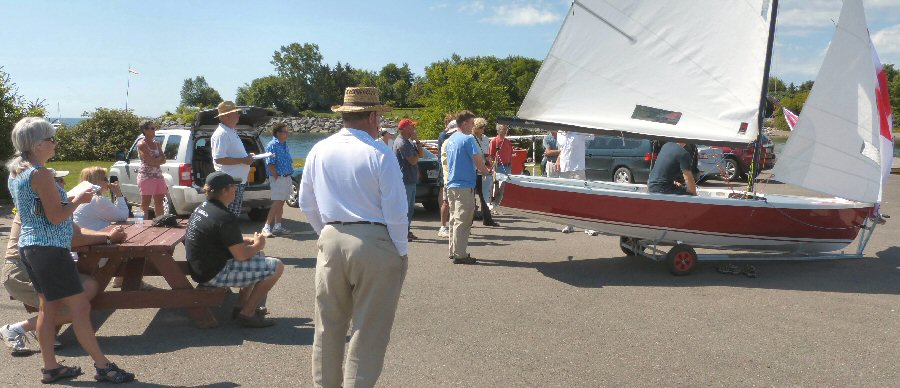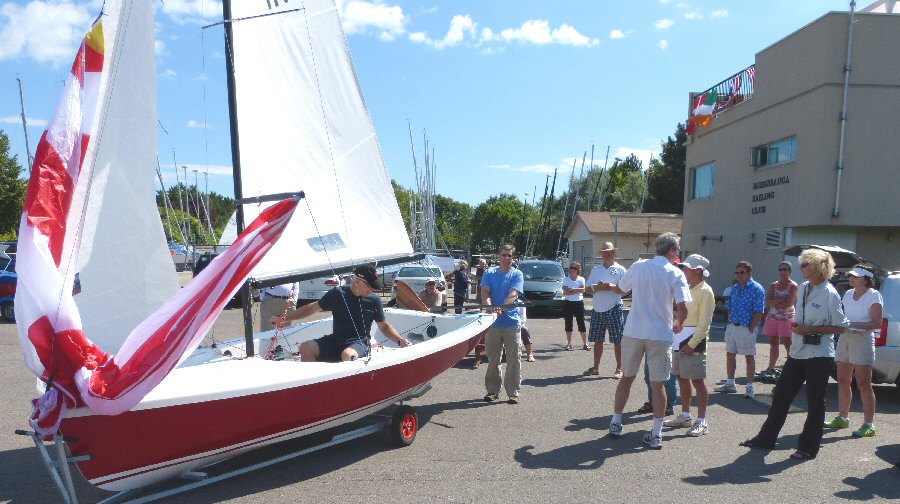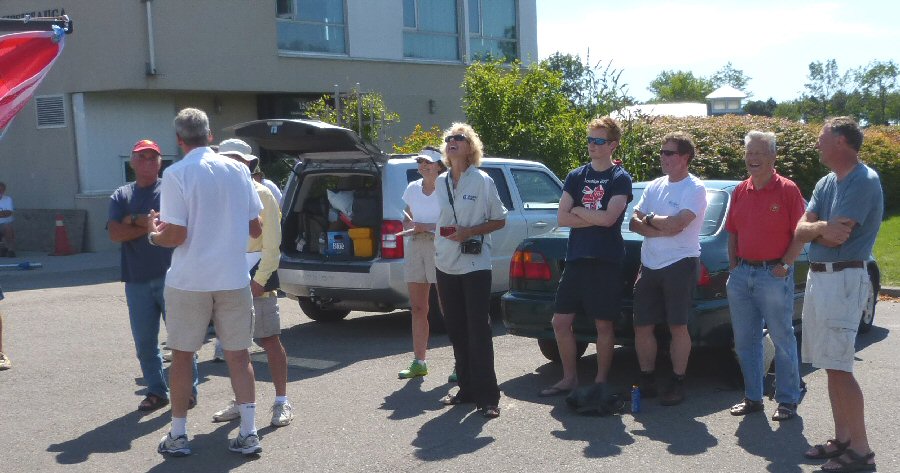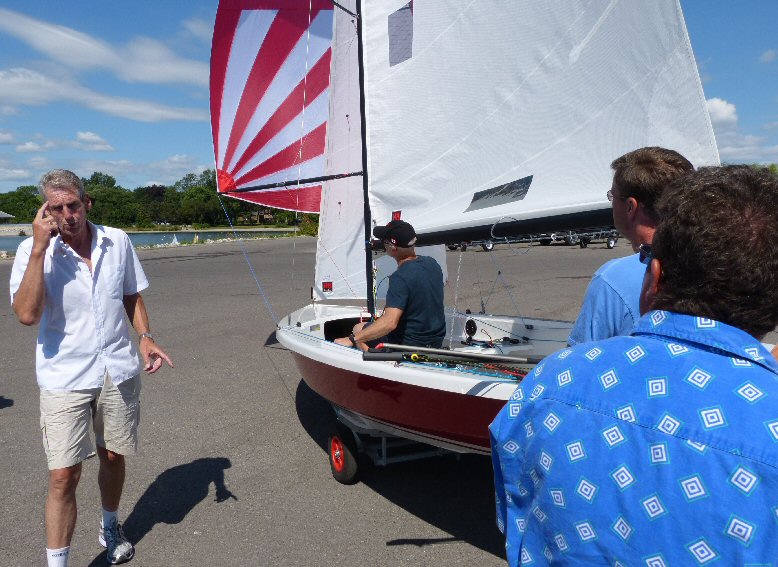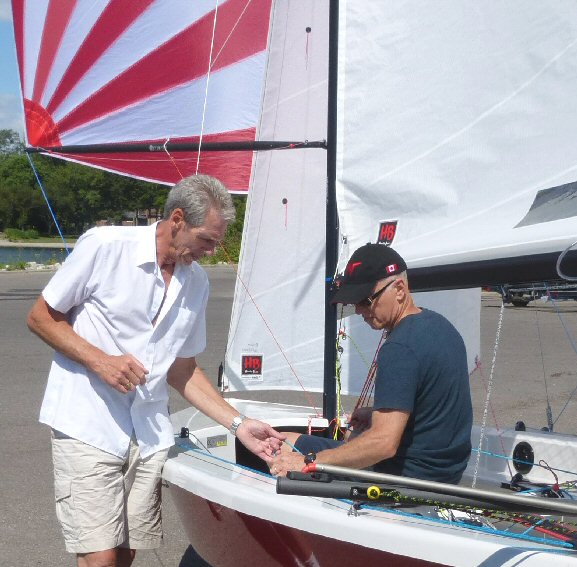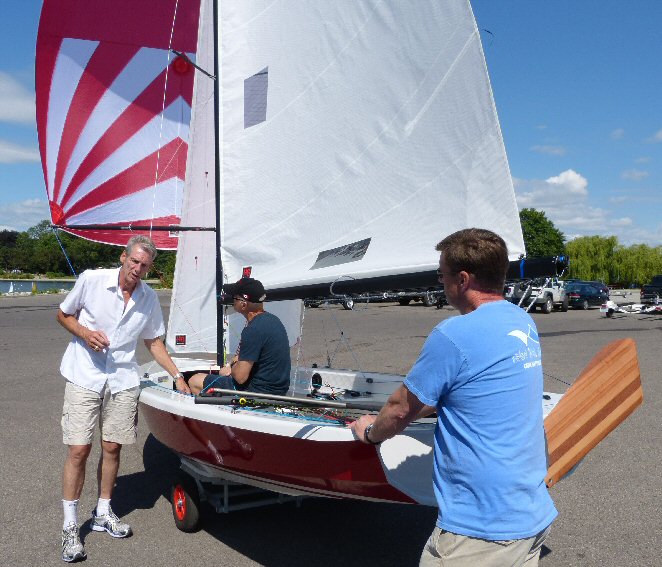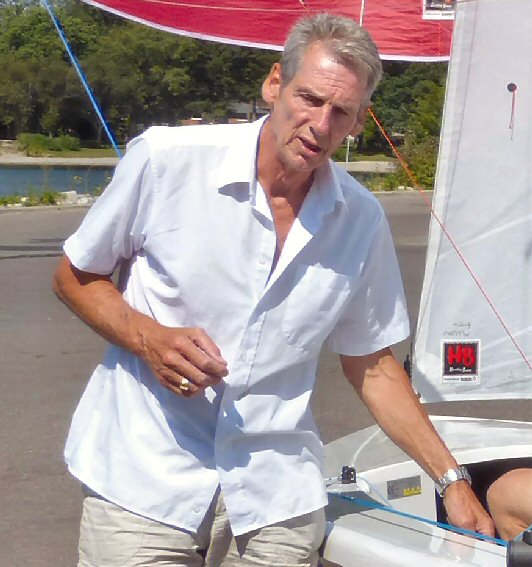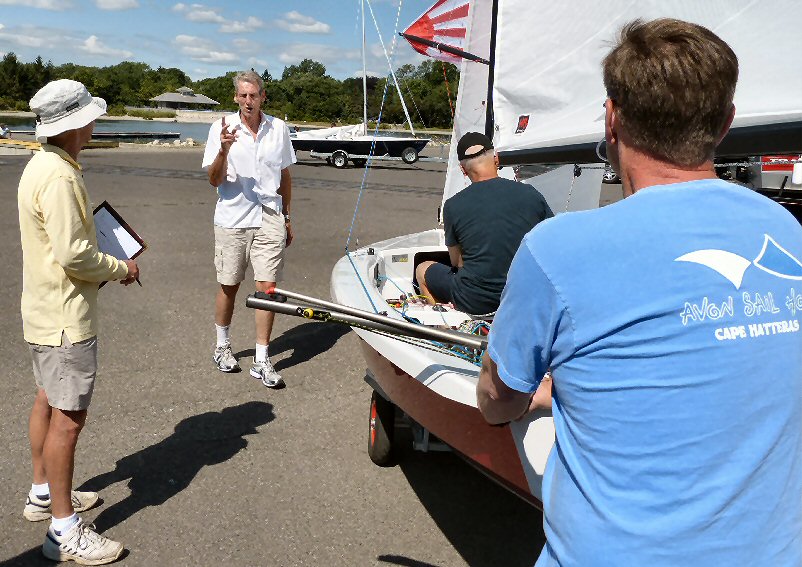(Al's notes in green)
Only three kinds of wind: rough, medium (both sit on high
side) and light. (crew sits in)
Only three "stations": beat, reach and run
Only four controls you have to worry about: board, kicker
(vang), outhaul and (main)
cunningham
- board: beat > full
down; close reach > up some (err towards too little board > boat
should steer itself)
- outhaul: usually fully
tight (to black band);
ease an inch if boat "sticking" in chop, i.e.
power up if boat feels slow
- (main) cunningham:
"horrible tool", not often needed (or
useful?)
- kicker: the most important tool on the boat > adjusts main
leech tension
- upwind: only used if
overpowered, or in gusts where main may need to be eased (enough vang to keep boom from lifting too much if
wind needs to be spilled); in blow, crew plays
kicker to keep top leech telltale streaming about 80% of the time (my ears doubtless deceived me, but I'd swear I heard
Richard say, over the wind noise on the video, that if the telltale is
fluttering excessively, it is saying, "You wanker! Ease the kicker!"?) while the helm steers to the genoa; blow: more
kicker > more cunningham, repeat as needed to depower to suit conditions: too much power = drag; ease
main (and jib) as required to keep boat from heeling too much. (note
from Richard Watterson:
I think you did hear right re:Hartley tips for kicker
adjustment. I think it is right to ease kicker if excessive
fluttering of tell tale. "Fluttering" is what happens as
you add kicker and he recommended 80% of the time, this is
opposite of "streaming" which happens when you don't have enough vang
and the sail is too closely aligned with the relative wind and you lose
power. In this case he would say "if I see excessive streaming
(i.e. no fluttering) the sail is saying 'you wanker, I need more
kicker'".)
- reach: enough to keep boom level; if top
main leech telltale stalls > ease vang
- run: Leo: enough vang to keep upper main
perpendicular to wind (praise from Richard for this answer) (boom level, i.e. perpendicular to mast)
Run:
- board - medium air: Richard
prefers to use some board, especially in gusty, capsize-type
conditions; he also feels that no board ends up requiring more
(slowing) rudder action
- board - blow: some board (1/4 to
1/2) adds stability and makes for easier steering; son, Mark, prefers
the excitement of the "board full up" school of thought
Beat to reach or run in blow: ease
some kicker to play it safe (ease main early to
help boat to bear off!!! but Richard says to ease vang to depower main
a bit first unless you feel very athletic)
Blowy reach:
- board 1/2
to 1/3
- golden rule
in gusts: never luff up!! Instead, bear away
(using eased main to assist)
- son, Mark, prefers to ease for
that extra bit of power and added thrill
- cunningham: ease if you want
added power
Run:
- board - some board even in
medium air to reduce need for rudder action; 1/4 to 1/2 in blow >
not enough to trip over
- kicker: top batten perpendicular
to wind
- cunningham: OFF!
- genoa: keep it pulling
- crew weight: forward but move aft
out of "Death Valley" if fear of capsize exists
Light air:
- beat: board full down; no
kicker; use adjustable bridle in order to centre boom to point without
main leech hook; outhaul tight > fast exit for wind across main; no
cunningham
Adjustable bridle: upwind -
centre boom, ease bridle til top ticker flies > crew plays as
conditions dictate
overall crew weight: in Mk IV
especially, avoid sitting too far aft and dragging the transom except
if fear of swimming becomes an issue
........
|
